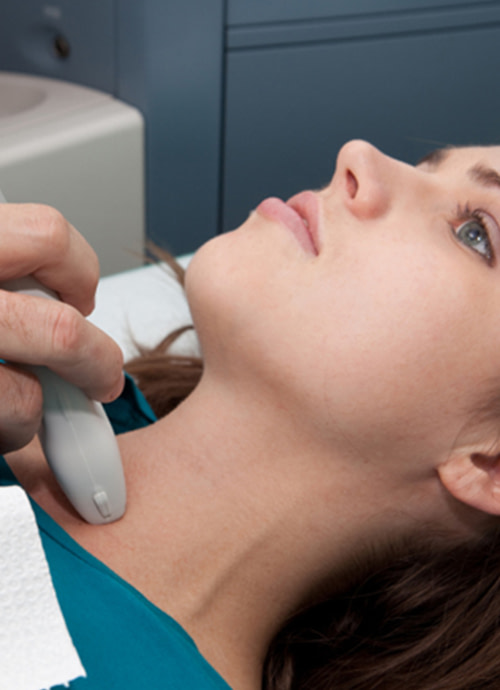What is a Ultrasound ?
Ultrasound imaging uses sound waves to produce pictures of the inside of the body. When the sound waves strike an object they bounce back and produce echoes. By measuring these echo waves, it is possible to determine how far away the object is and its size, shape and consistency (whether the object is solid, filled with fluid or both). Because ultrasound images are captured in real-time, they show the structure and movement of the body’s internal organs, as well as blood flowing through blood vessels or movement of joints or tendons in the musculoskeletal system.
What are the uses of ultrasound ?
Ultrasound examinations are used to help diagnose a variety of conditions. Ultrasound may be helpful to evaluate symptoms such as pain, swelling, infection and blood in the urine. Ultrasound is a useful way of examining many of the body’s internal organs, including but not limited to the:

- Bladder
- Gallbladder
- Brain and hips in infants less than six months old
- Kidneys
- Liver
- Blood vessels, including the abdominal aorta and its major branches
- Scrotum (testicles)
- Spleen
- Thyroid
- Uterus and ovaries
- Breast
Benefits of a Ultrasound
Ultrasounds offer many advantages: They are generally painless and do not require needles, injections, or incisions. Patients aren’t exposed to ionizing radiation, making the procedure safer than diagnostic techniques such as X-rays and CT scans. Ultrasound captures images of soft tissues that don’t show up well on X-rays.
Preparation
Preparations will vary depending on the type of procedure, for example:
- Abdominal Ultrasounds : (including gallbladder, liver and spleen) Patients should not drink or eat anything after 10 p.m. the night before the test.
- Breast Ultrasounds: Patients should bring prior mammogram films or reports for comparison, if any.
- Pelvic Ultrasounds: Patients should drink 48oz. (6 cups) of water at least one hour prior to the test.
- Renal Ultrasounds: Patients should not drink or eat anything at least 6 hours before the test.
Risks of a Ultrasound
Diagnostic ultrasound and/or sonography is considered a safe, noninvasive procedure by most every medical community, in part, because it uses low-power sound waves. No major medical source in the U.S. has cited that there are any direct risks from a diagnostic ultrasound exam harmful enough to prevent it’s use.
Result
When the exam is complete, a radiologist will review your images electronically. Your physician will receive a report and images detailing the findings from your exam within 24 hours









